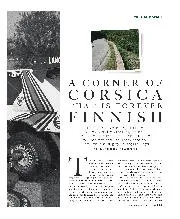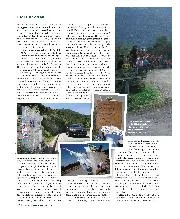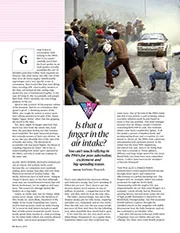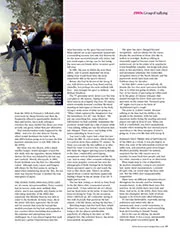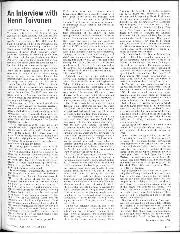The Italian team boss had watched Henri mature into a world class driver and blossom into the WRC’s hottest prospect. Come 1985, Fiorio decided the time was right to bring him into the Lancia fold.
“When he arrived, he changed everything in a better way – he really was fantastic.”
The younger Toivonen had taken a breakthrough win at the 1980 RAC Rally, but then had to wait almost exactly five years for his next.
The results with Lancia immediately started to come when Toivonen joined the Turin team for a part-time debut season, limited due to the fact that the Finn broke three vertebrae in his neck due to a crash early on in the year. A sixth in Monte Carlo, fourth in Finland and third in San Remo, all at the wheel of a two-wheel-drive Lancia 037, showed a promising upward trend though.
Then came the Lancia Delta S4.
The Italian squad had finished the 1985 championship a distant third to Peugeot and Audi, who fielded 205 T16 E2s and Audi Sport Quattro S1s respectively, each 4WD.
Lancia spent the season developing its first 4WD car, and the resultantly rapid Delta S4 was a match made in heaven with Toivonen. The young Finn also had single-seater racing aspirations at one point, and some of the race track-tested technical features of the astounding S4 meant that car and driver suited each other down to the ground.
“We were doing track racing with the Beta Monte Carlo, LC1 and LC2,” remembers Fiorio. “Circuit racing was giving a lot of better ideas to the technicians that were preparing rally cars. The experience gathered from the track helps you sophisticate a lot of things like fuel consumption, brakes, etc. I think also the drivers [like Toivonen] could use the performance needed on the track, and bring it into rallying.”

Toivonen takes a break as mechanics get to work on his “deranged” S4
DPPI
Lancia had put as much resource as possible into this car. The budget of their rally and race team was rumoured to be 10billion lire (£426,000) a year by 1986.
This carried-over technology from Lancia’s sports car prototypes efforts helped accelerate the S4’s development – literally: 550bhp channeled through 4WD certainly gave it some shift.
“The level to which we had developed the S4 was something absolutely incredible. It took 2.8 seconds to go from zero to 100 kilometres an hour, which was the performance of an F1 car,” says Fiorio. “Toivonen was the only driver that could use all the potential of this car.”


